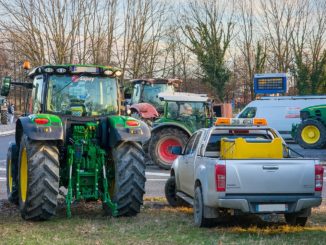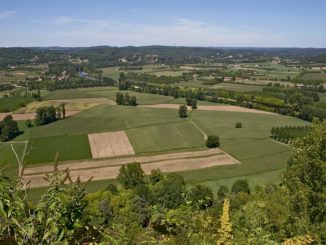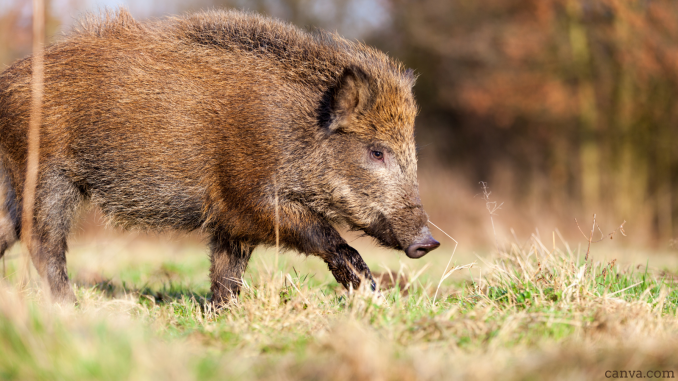 To cull or not to cull? As Poland’s battle with African Swine Fever rages on, state-sponsored efforts to decimate the wild boar population have polarized public opinion. In part 2 of this series, Igor Tomasz Olech examines the two sides of the culling story.
To cull or not to cull? As Poland’s battle with African Swine Fever rages on, state-sponsored efforts to decimate the wild boar population have polarized public opinion. In part 2 of this series, Igor Tomasz Olech examines the two sides of the culling story.
Poland is the European epicenter of African Swine Fever (ASF) in terms of the number of outbreaks in pig farms and among wild boars. As I discussed in part 1, Poland is fighting the battle with the virus on two fronts: biosecurity for pig farms, and culling of the wild boar population.
Its biosecurity programme however has come in for criticism. In a 2017 report, the Highest Chamber of Control (NIK) concluded that Poland’s biosecurity programme was poorly prepared and unreliably implemented, leaving 74% percent of farms unprotected. The auditors also found that veterinary inspection protocols were often falsified in order to create the appearance of protecting pig herds against ASF.
As for culling, the Polish Minister of Agriculture authorized the “sanitary shooting” of wild boar in January 2016. The goal was to eliminate 210,000 animals, i.e. 98% of the entire Polish population of wild boar (the most recent census data from 2017 estimates that there were 214,000 wild boar in Poland). The threshold was half a boar per square km.
By September of that year, 5,525 boar had been culled (out of a planned 7,710 shootings).
Culling in conjunction with biosecurity
The then Agricultural Minister Krzysztof Jurgiel was disappointed at the rate of progress of the culling (in July 2016, less than half the planned numbers of boar were shot). And so in August 2016 the Minister called for the formation of an Interministerial Team for ASF, where all kinds of state forces – not only those dependent on the Ministry of Agriculture – would be responsible for biosecurity implementation. The plan was to create cooperation between the Police, the Road Transport Inspectorate, the Veterinary Inspectorate and the State Sanitary Inspectorate, as well as the Customs Service, the Border Guard, the Forestry Guard and the State Forests holding.
The task force wasted no time in changing legislation to deal with the mounting epidemic. In September 2016 a Special Act was passed with overwhelming support in parliament. Under the new law, provisions included a ban on the public purchase of pork from infected regions, three-year compensation for farmers, and a provision to utilize carcasses in certain circumstances. Additionally the new regulations were applauded for improving forest fencing and construction of disinfection troughs.
Meanwhile the culling continued. Over 300,000 wild boar were shot between March 2017 and January 2018. By the end of 2019, 170,000 wild boars (90.7% of the culling target) had been shot, according to data presented by the Polish Hunting Association.
Polarizing debate
The methods of handling ASF have polarized public opinion. Environmental groups call for on-farm biosecurity, while the the government favors wild boar culling. Some hunters were against indiscriminate wildlife culls (the late Minister of the Environment Jan Szyszko allowed the killing of any wild boars – including piglets and pregnant hogs). A majority of environmental groups stood against the decision of Minister Szyszko, claiming that the new policy could lead to a total extermination of wild boars in Poland. Since the season on boars opened, the average lifespan of a wild boar – which naturally lives 14 – 15 years – has declined below 1.5 years. On the other hand, most hunters argue that the population can quickly recover.
One leading expert on ASF, Professor Zygmunt Pejsak, argues that the boar population needs culling. “We need to reduce the wild boar population by 20 to 30 times,” he told industry publication Pig Progress in a 2018 interview. “This is to keep the disease risk as low as possible. I strongly underline that hunting must be ‘intelligent’, i.e. very well organised and focused on females.”
“The most important in this all is to kill as many wild boar as possible in the wider area around the infected zone. So even if an infected wild boar would go out of the infected zone, it will break the infectious chain because there are no others to infect,” said Professor Pejsak.
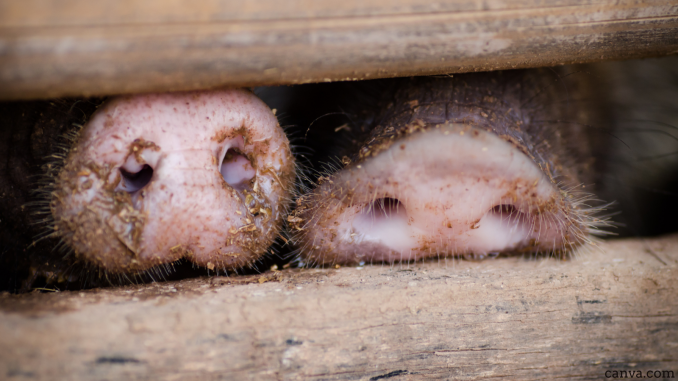
Culling exacerbating the spread?
The new laws were criticised by experts, who claim it emphasizes the role of hunters at the expense of biosecurity for farms.
In January 2019 a group of some 300 environmental scientists appealed to the Prime Minister to withdraw the decision to shoot wild boar, reports TV corporation Polsat. The scientists claimed that poor biosecurity is the real culprit for the spread of the virus.
In an open letter to the prime minister, the scientists stated that according to experts from the State Veterinary Institute in Puławy: “all new outbreaks of ASF virus infection in Poland are the result of human transmission of the virus.” (It is worth adding that the virus can be spread not only by boars, pigs and humans, but also by other species such as ticks and insects.)
“The real reason for the development of ASF in Poland is the lack of biosecurity and insufficient sanitary control in the pork industry,” said the scientists, who described culling as a “simulated and costly” solution, and appealed to hunters to not obey the orders. Piotr Chmielewski of WWF Poland suggested that instead of spending money on boar hunting, the government could direct its efforts to intensify biosecurity education for farmers.
That month small demonstrations in “Solidarity with the wild boar” took place in a number of Polish cities. Led by the Polish Green Party, the protestors accused the hunters’ lobby of inspiring the conservative government to create the new law, and the ruling PiS party of attempting to appeal to farmers. Some hunters also opposed the new regulation.
In response the Minister of the Environment insisted that the culling is a necessary measure to prevent the spread of ASF, and that the emerging number of 200,000 wild boars to be killed was “completely untrue“.
The cons of culling
Bolting boar
In their open letter to the prime minister, the scientists stated: “both EFSA guidelines and national practice indicate that mass wild boar hunting is a major contributor to the spread of the virus (ASF)”.
Scientists from the Polish Academy of Sciences also appealed to president Andrzej Duda not to sign the culling law. They cited the European Food Safety Agency’s (EFSA) claim that culling scares off animals, causing them to run away and spread the virus further.
Both pro- and anti-culling groups refer to EFSA as the authority on this issue.
More footfall in the forest
Zoologist Professor Andrzej Elżanowski has also stated that mass hunting can lead to even further spread of the virus, including through hunting dogs, hunters’ shoes or car tires.
More visitors to the forest in summer points out to higher amount of outbreaks among domestic pigs, reports Portal Agropolska.
Black market boar meat
Professor Bogusław Szewczyk of the Polish Academy of Sciences warns that mass shootings could increase the illegal sale of boar meat and thus, paradoxically, contribute to further spread of the virus. Of course, this is only an assumption, but a logical one in view of the problems with carcass storage.
Lack of freezers
As of 2019 boars are inspected for viral infection by local vets, instead of sending samples to the laboratory in Puławy. Boars now have to be kept in freezers until the samples are inspected. But the lack of freezing facilities is a problem, reported Farmer’s World.
Without the support of the government, the ASF problem cannot be solved, claimed Aleksander Dargiewicz of the National Association of Employers – Pig Producers.
Poland has definitely made a progress regarding storage of the hunted boars. Despite improved carcass preservation conditions, hunters are still not happy with the amount of freezers. In the region of Greater Poland (Wielkopolska) there is not enough storage space for hunted boars. During the 2019 season, hunters in the region covering 1/3 of Greater Poland hunted down twice as many boar as the previous year (15,000 wild boar kills from April to December 2019).
Hungry wolves
Another argument against culling is disruption to the forest ecosystem.
Prof. Elżanowski points out the risk of fallout: boar eat insects and larvae, and spread litter and seeds of trees while migrating.
Another argument is that in natural conditions boars are hunted by wolves. But without sufficient prey in the wild, wolves may instead turn to livestock.
But does the “wolf argument” hold water? An average boar consists of 37 kg of meat. Assuming that this much meat is enough for a wolf to survive for a week (or for “one meal” for an average pack of six, assuming that the wolves eat only boar), taking high-end assumptions, Polish wolves require 137,500 boar per year to feed themselves. Even in the low-end scenario (125,000 boar per year for Poland’s wolves), culling would limit the supply of boar in the wolf’s diet. (The outcomes of the above calculations vary, and until more precise boar and wolf numbers are known, it is difficult to establish which of the solutions would be the best for all the interested parties.)
It is also important to add that the wild boar population in the regions initially demarcated in the agreement with the EU amounted to less than 10,000. If culling were to be implemented swiftly and in a targeted manner, as in the Czech Republic, there would be no risk of wiping out the entire boar population.
Hunters claim that it would be impossible to completely wipe out the population since boar reproduce at a rate of 250% annually.
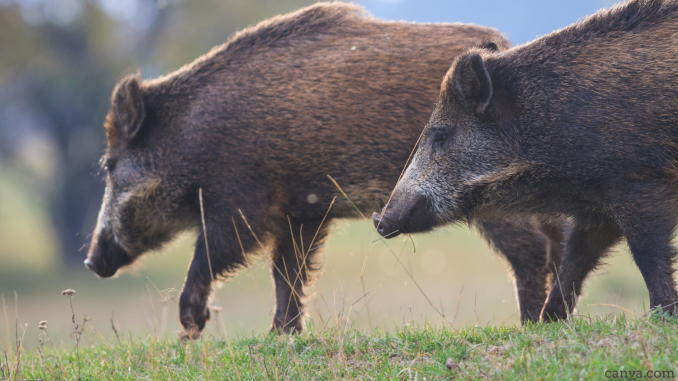
Removing the rot
In their open letter, the scientists propose forest searches as a method to fight the epidemic.
According to the Central Veterinary Inspectorate, although ASF is not so contagious, it is extremely important to rapidly remove infected carcasses. The virus can survive in decaying matter (e.g. boar carcasses) for many months.
Removal of carcasses is not only important due to accidental spread of the virus from one boar or boar herd to another, by hunters or even by visitors to the forest. According to Probst et al., wild boar prefer to roam on soils which are surrounded by dead matter – including carcasses – thus when these carcasses are removed, boar are less likely to wander toward these areas. This opinion is supported by EFSA. The collection also halts the long-term (rather slow decay time) spread of the virus in Poland’s temperate climate.
Polityka magazine warned about the limiting the rights of ecological activists who would observe the forest clearing activities of foresters, police, firefighters, border patrol, and the Veterinary Inspection. The “obstruction of sanitary hunting” would be penalised by imprisonment.
CAP made things worse
Interestingly, CAP has indirectly contributed to the growth of the boar population, thus increasing the possibility for the virus to spread further, through subsidizing soy and corn production:
Since the 1990s, the wild boar population has been rising rapidly across Europe due to mild winters and industrial agriculture privileging energy-rich corn and soy production (the same crops that enjoy EU subsidies). These favourable conditions have even altered the reproductive patterns of the species, allowing for more frequent pregnancies and larger litters. Human-induced conditions, such as the elimination of natural predators, climate change and agricultural mono-cultures aided wild boars to thrive.
This would not be possible in a more diverse farming system, based on small farms, of which there is an abundance in Poland. According to EU regulations, a maximum of one boar should roam around 200 hectares. The Ministry of Agriculture’s plan was to decrease the number of boar to 1/1000 hectares.
Conclusion
Professor Pejsak believes the virus is “here to stay“. In a 2018 interview, he predicted that the virus would eventually makes its way to western Europe, even if it took a decade to do so. His predictions turned out to be correct – if only not pessimistic enough: ASF was discovered in Germany in August 2020. The future may be grim for the pork industry and wild boar.
It took around forty years for Iberian states to fight off the virus, and it was finally achieved due to severe reduction – almost complete – of wild boars and pigs. According to Marianna Szczygielska, the same solution is being pursued by the Polish government but, according to her, this approach will not prove efficient in our environment, as the soft tick which allowed the virus to spread in Spain and Portugal is absent from Central and Eastern Europe. In Poland, conversely, the spread could be caused by the movement of boars and – especially – humans during the culls.
Both sides of the conflict make some valid arguments. The pro-government and industrial camp is attempting to wipe out the disease as soon as possible to save the industry; the pro-ecological camp is attempting to safeguard the forest ecosystem. However the most important for any further discussion and creation of regulations is the establishment of solid numbers.
The collection of boar carcasses in forests is a policy on which all sides agree. The controversies appear with the culling. The grounds for it are also nuanced – there are epidemiological reasons (whether culling prevents or accelerates the spread of the disease), environmental reasons (whether culling will negatively impact the ecosystem and its food chain), ethical reasons (some protesters stood on the ground that culling is unethical). Other problems which Poland encounters are not enough storage facilities, where carcasses could be stored. Regardless of which side is correct, we can expect that similar issues will arise in other countries where ASF can spread.
More on Poland
Poland | The Biosecurity Battle with African Swine Fever on Farms




